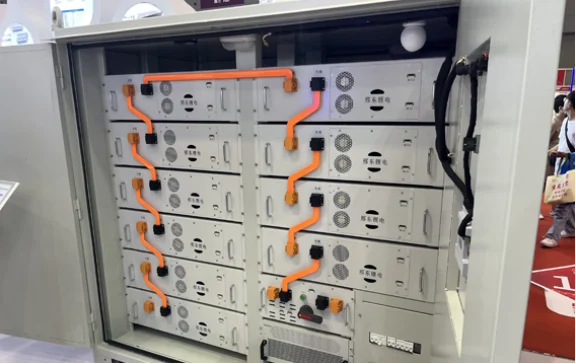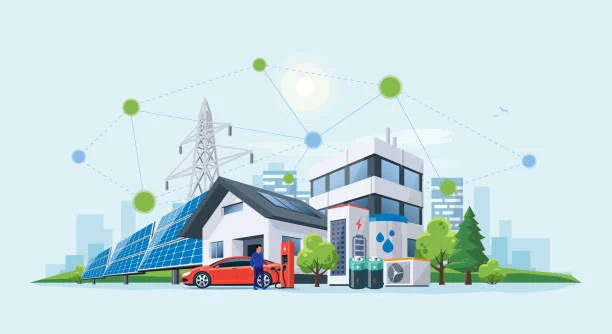An Analysis of Sudan’s Renewable Energy Policies: Investment and Innovation in Energy Storage Technologies
2025-04-02
Although the energy demand of Sudan continues to grow and environmental concerns are more and more becoming the focus, the government of Sudan has turned its back on traditional power as a key source of sustainable development. This about-face is driven by the integration of new technology into energy storage. With new renewable energy technology and energy storage technologies, Sudan is poised not only to increase its renewable energy programs but also to debar market restrictions and enhance the reliability of energy.

Sudan's Renewable Energy: Introduction
Abundant in wind and sun resources, Sudan has only recently embarked on a visionary pursuit of transforming its energy sector. Sensing the strength of renewable energy, the government has steered diversified renewable energy schemes with a focus on de-emphasizing the use of fossil fuels as well as fulfilling the increased electricity demand of its population.
- Government Initiatives:Sudan's renewable energy policy comprises private investment incentives, reduced permitting, and foreign collaborations. All these efforts are aimed at promoting the use of renewable energy technologies.
- Investment in Renewable Energy Projects:With growing emphasis on solar and wind projects, huge amounts of capital are being poured into the development of renewable infrastructure. Not only is this investment required to limit carbon emissions but also to securing the energy base.
- Market Dynamics:As the Sudanese renewable energy market expands, market dynamics become increasingly applicable. Potential for the development of renewable energy is driven by regime reforms, international trends, and indigenous demand.
The Role of Energy Storage Solutions
For an attempt towards the maximum utilization of renewable energy, the variability of such energy must be broken. Energy Storage Solutions provide guarantee of harvesting and storing excess energy produced during peak-generation hours for use during off-peak generation hours.
Advantages of Energy Storage Systems
- Grid Stability:Energy storage systems provide balance between supply and demand by storing excess renewable energy and feeding it when required, stabilizing the grid.
- Increased Efficiency:With the presence of energy during peak hours, energy storage devices enhance energy overall efficiency and minimize energy wastage.
- Cleaner Energy Supply:Energy storage provides cleaner energy with a better supply of renewable energy, needed for rural and urban areas.
- Increased Investment Value:Stable energy storage devices can allow for additional investments by minimizing the risk of operation and the increased return on investment in renewable energy.
Best Practices for Use of Energy Storage
To enable Sudan to reap the maximum benefits of the use of renewable energy, it must embrace best practices in the use of energy storage technology. Such practices are important in ensuring that the energy storage system is robust, efficient, and reliable.
System Design and Integration
- Tailor-Made Solutions:The energy storage system would be specifically designed to resemble the unique output of the renewable energy system. This comprises battery sizing as well as inverters compatibility.
- Component Compatibility:Each of the individual components has to be compatible so that they may function in cooperation with each other to enhance the efficiency of the system. Energy storage system compatibility, renewable energy system compatibility, and grid system compatibility are keys to success.
- Scalable and Modular Design:With modular designs, it is possible to grow in the future and remain flexible, meeting growing energy requirements without having to make more additional expensive investments.
Maintenance and Monitoring
- Regular Inspections:Ongoing maintenance is required to preserve the maximum efficiency of energy storage systems. Regular checking of battery status, inverter efficiency, and system integration as a whole is included.
- Real-Time Monitoring:Advanced energy management systems ensure round-the-clock monitoring of the storage performance. Intermittent intervention on the occurrence of anomalies is guaranteed by real-time data gathering.
- Predictive Maintenance:With the application of data analytics and AI, predictive maintenance allows future issues to be predicted before a system failure occurs, thereby optimizing the lifespan of the energy storage infrastructure.
Applications of Energy Storage Technology in Microgrids
Usage of energy storage technology in microgrids becomes extremely important in Sudan, where rural electrification is an issue. Island-mode or parallel-running microgrids will highly be benefited using next-generation storage technologies.
Key Applications:
- Rural Electrification:In weak grid-access regions in remote areas, microgrids enabled with energy storage based on renewable sources can supply assured, off-grid power.
- Disaster Relief:During circumstances involving natural disaster or crisis, energy storage systems and mobile microgrids provide a quick and responsive power supply.
- Commercial and Industrial Usage:Energy storage systems stabilize urban microgrids and enhance efficiency, lowering peak demand charges as well as overall enhanced response in energy management.
- Remote Monitoring:Microgrids can be advanced through incorporation of energy management systems that provide real-time monitoring to facilitate efficient and sustainable operations.
Sudan Renewable Energy Market Trends
The Sudan renewable energy market is changing at a very high speed that is being fueled by global and regional trends. It is important to identify these trends for investors who would like to invest in energy storage technology.
Major Market Trends:
- Investment Trends:Due to growing government incentives and foreign investment of capital, investment in energy storage and renewable energy programs is on the rise.
- Policy Reforms:New regulations that will limit the utilization of fossil fuels and encourage the transition to clean energy are changing market trends.
- Technological Innovations:Ongoing technological progress in the field of renewable energy technology and energy storage systems is increasingly making such systems affordable and effective.
- Market Challenges:Despite the growth, the market is still faced with challenges in terms of high startup capital costs, regulatory problems, and supply chain bottlenecks. All these need to be met by concerted efforts made by the government, local industry players, and global players.
Collaborative Efforts and Future Outlook
The future for the growth of renewable energy in Sudan is bright. Collaboration between government bodies, investors, and technology providers is the way forward to breaking market barriers and advancing the growth of renewable energy.
Future Trends:
- Increased Technology Integration:Expect increased research on the growth of energy storage technology to make the system cost-effective and lower the cost of operation.
- Renewable Projects Scaling Up: The renewable projects will scale up with a facilitating policy framework and induce additional investment in grid-scale and microgrid applications.
- Sustainable Development:The technological maturity and price decline, Sudan is likely to meet its target on renewable energy that will complement the world effort towards reducing the emission of carbon and making energy sustainable.





